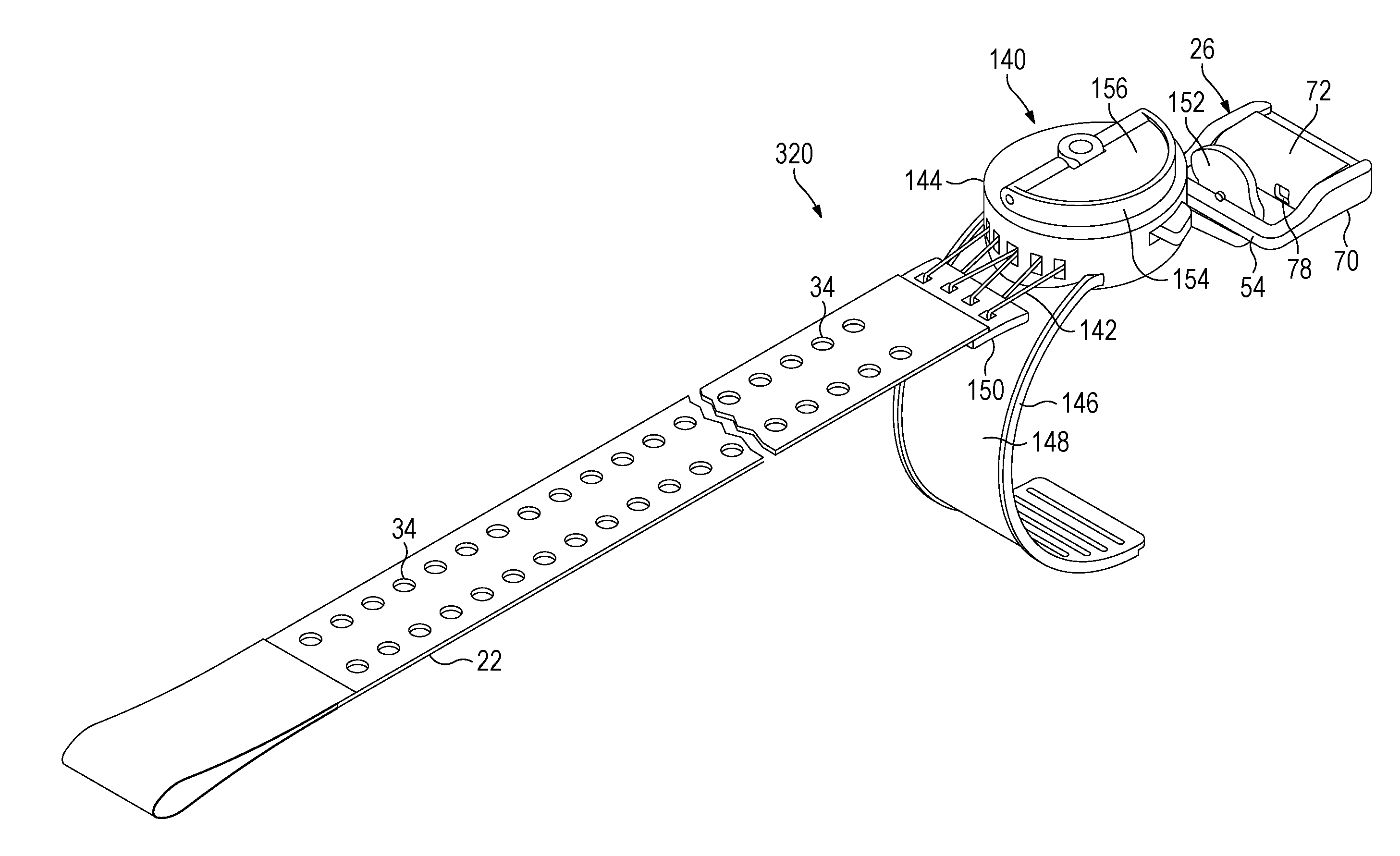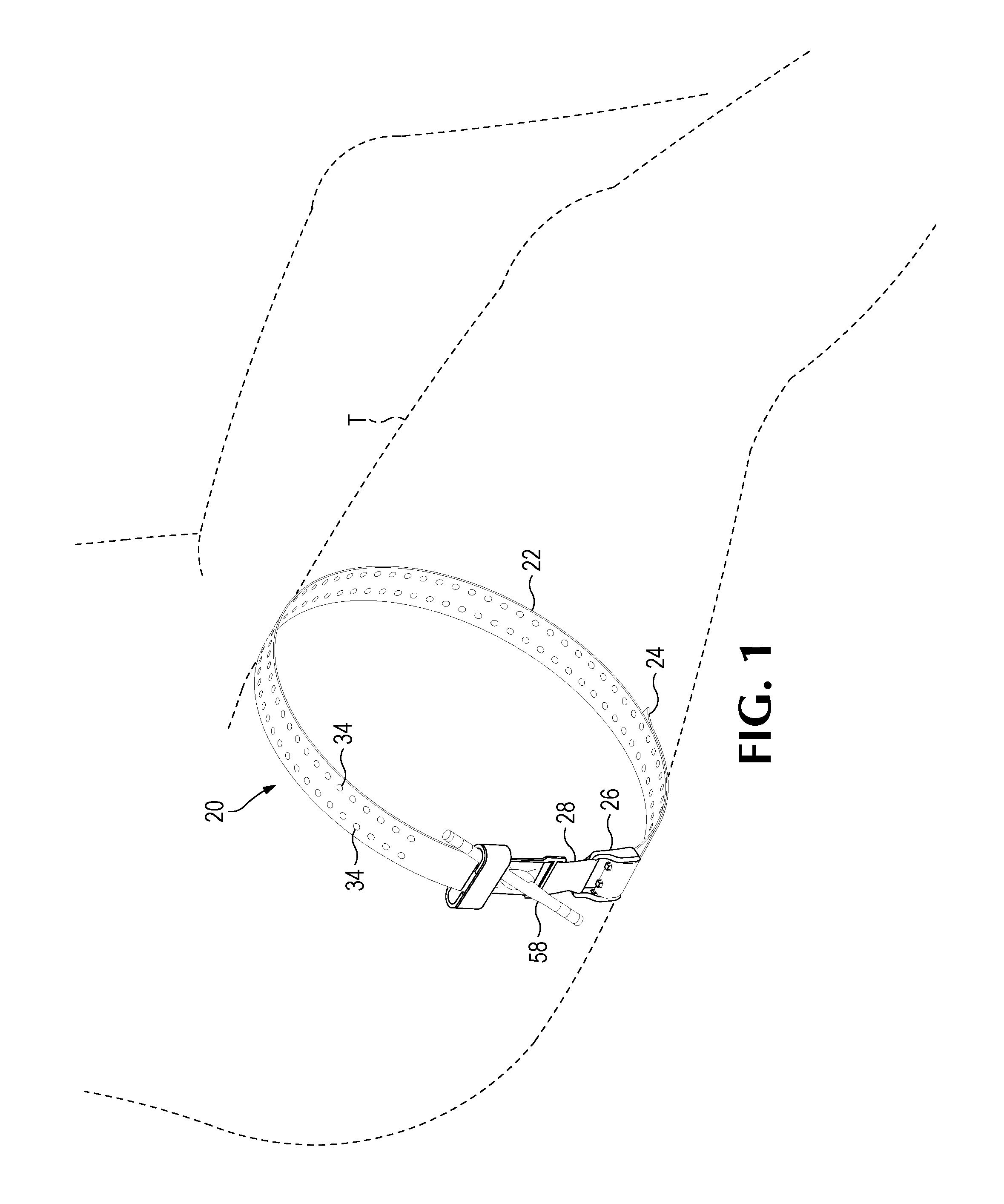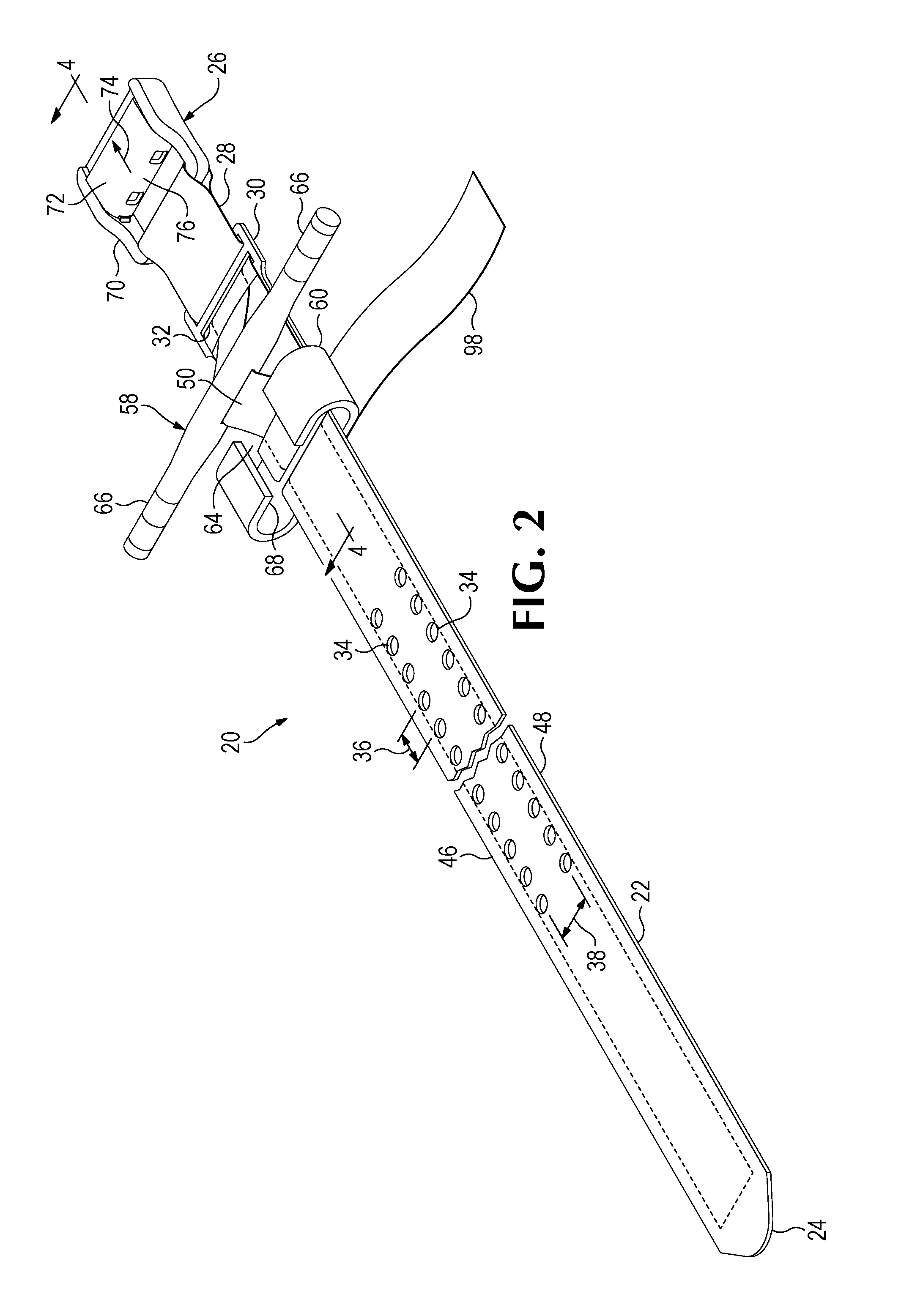Extremity tourniquet with locking buckle
a technology of tourniquets and buckles, applied in the field of tourniquets, can solve the problems of ineffective fine circumference adjustment mechanisms, slow application times, increased initial blood loss, etc., and achieve the effect of increasing the tension of the tourniquets
- Summary
- Abstract
- Description
- Claims
- Application Information
AI Technical Summary
Benefits of technology
Problems solved by technology
Method used
Image
Examples
Embodiment Construction
[0060]Referring to the drawings that form a part of the disclosure herein, a tourniquet 20 which is a first embodiment of the emergency extremity tourniquet disclosed herein is shown in FIGS. 1-9. In FIG. 1, the tourniquet 20 is shown in place on a patient's thigh T. As shown somewhat more clearly in FIGS. 2 and 3, the tourniquet 20 includes an elongate strap 22 having a first, or outer, end 24 and a buckle 26 permanently attached to its opposite, second, or inner end 28 as by a loop 29 of the strap fitted around a part of the buckle 26. A backing plate 30, of a suitably strong plastic resin or of sheet metal, for example, may be provided, and the strap 22 may be threaded through a pair of slots 32, provided at the ends of the backing plate 30, as shown in FIGS. 4 and 5.
[0061]As used herein, the term “permanently attached” means that removal and reattachment are not easily accomplished by a user and cannot be accomplished readily without the use of equipment similar to that needed f...
PUM
 Login to View More
Login to View More Abstract
Description
Claims
Application Information
 Login to View More
Login to View More - R&D
- Intellectual Property
- Life Sciences
- Materials
- Tech Scout
- Unparalleled Data Quality
- Higher Quality Content
- 60% Fewer Hallucinations
Browse by: Latest US Patents, China's latest patents, Technical Efficacy Thesaurus, Application Domain, Technology Topic, Popular Technical Reports.
© 2025 PatSnap. All rights reserved.Legal|Privacy policy|Modern Slavery Act Transparency Statement|Sitemap|About US| Contact US: help@patsnap.com



